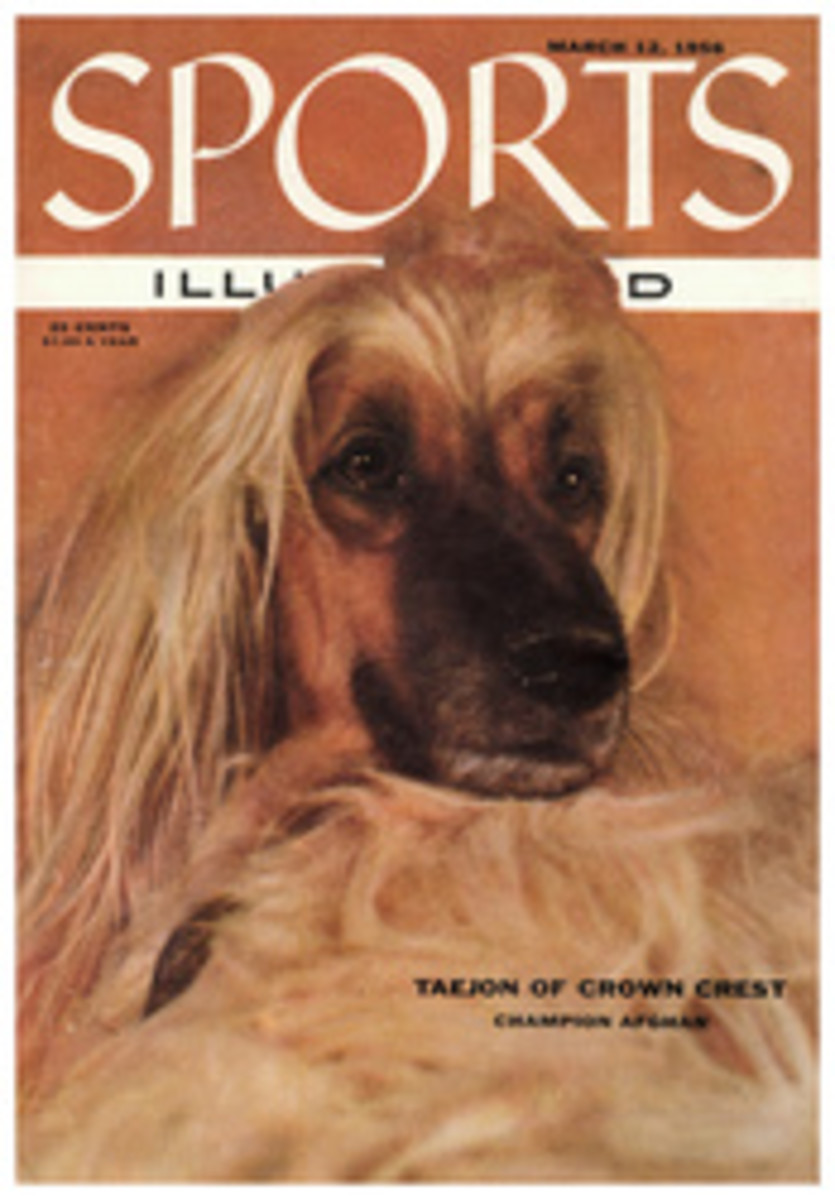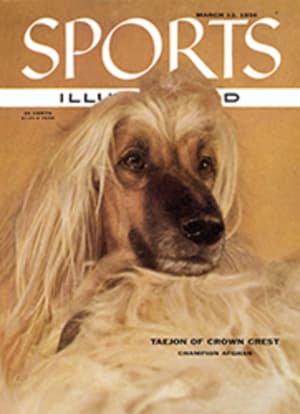
CHICKENS IN THE ROUGH
A true gamecock isa perfect fighting machine. Back of him are centuries of breeding which havepreserved his gameness, his lightning quickness and his ability to strike withpower far beyond what might be suspected in a chicken. His plumage glistenswith a radiance unknown among his cousins of the barnyard. When conditioned forthe pit his endurance is mighty. In his prime he is the spirit of arrogance andin combat the only thing that stops him is death.
These traits,embodied in this descendant of the wild Asiatic jungle fowl, are whycockfighting is still one of the world's most widespread sports. Scenes such asthose in the photographs on the following pages, taken at a Puerto Ricancockpit, are duplicated with variations in Europe, Asia and North and SouthAmerica.
To many outsidethe cockfighting fraternity it is not a sport at all but a cruel pastime whichshould be stamped out. In this country almost every state has laws against it.At the same time its presence in almost every state makes it one of the mostthriving illegal sports in the U.S.
To most people inthe U.S. cockfighting is like a summer breeze. It is all around them but theynever see it. Once in a while they hear a rustle when the authorities raid acockpit and haul the chicken fighters and their birds off to court. The usualresult is that the game cocks are seized and their owners fined. The lattershrug their shoulders with the attitude of an oppressed minority and look for asafer place to hold their fights.
Despite itsillegality, members of the fraternity know that in this country their sport isexperiencing a boom. Cockfighting has several successful "trade"magazines (among them The Gamecock and Grit and Steel) which openly advertiseforthcoming tournaments. Mains and hackfights are being held in barns andcockpits over most of the nation. At a recent tournament in Florida 128 battleswere staged over a four-day period to decide the ownership of $11,000. Thispurse, of course, was in addition to the pitside betting.
Cockfighters takea deep pride not only in the gameness and prowess of their birds but in theirlineage. There are strains which have been handed down through generations inthis country; among them are such great families as the Allen Roundheads, theShelton Roundheads and the Clarets.
The breeding,rearing and fighting of gamecocks is as complicated as the racing ofThoroughbreds. Given a successful breeding program it is still a long way fromthe shell to the pit. Most game chickens are raised by hens, the fraternityfeeling generally that a natural upbringing is best. Once the young males,called stags, begin to reach maturity all tarnation breaks loose. One day a manwill have a yardful of stags which have lived peacefully together all theirlives. The next morning he will find them fighting all over the place. At thispoint they are separated and from then on their only contact with other maleswill be in sparring bouts with boxing gloves, called muffs, or in deadly combatin the pit.
The most importantphase in preparing a cock for battle is the conditioning or "keep"period. Standing before a padded table, the feeder, as the conditioner iscalled, tosses the cock into the air to exercise his wing muscles andcross-walks him by pushing him back and forth across the table. This exerciseis increased each day until the cock is tossed into the air as many as 50times. Meanwhile a most elaborate feeding program is in force, including suchitems as chopped beef, cooked grain and chopped nuts.
If all goes wellthe cock arrives at the pit bursting with energy and crowing almostincessantly. He is matched against another cock within two ounces of his weightfor a specified wager. A short time before the fight the handlers are told toheel up.
In this countrythe weapons with which cocks are heeled are gaffs—round, curving, steel needleswhich are fastened over the natural spurs by means of leathers and waxedstring. In Puerto Rico they often use artificial spurs glued over the stubs ofthe natural ones.
At a call from thereferee the two handlers march into the pit, each holding his bird in the crookof his arm. The cocks are beaked, held close enough so they can peck and becomeaware of the presence of an adversary.
"Pit yourcocks!" shouts the referee. The handlers liberate their birds some 20 feetapart. The cocks meet six feet above the ground in a blur of wings and flashingsteel. They come to earth and each gets a beakhold. They go into a longshuffle, legs pumping. Suddenly they become entangled and the referee shouts,"Handle!" The handlers grab up their birds, nursing and resting themuntil the referee shouts, "Pit!" Again handlers drop their birds andagain the blur of wings and legs is so fast that a novice cannot detect thetelling blows.
But as the fightprogresses the odds shouted out by the crowd change swiftly. Suddenly, in themidst of an exchange of blows, one bird drops dead. The victor stands besidehis fallen foe and emits the short, challenging crow of the gamecock.
Often, though, thevictor hardly gets time to crow. The handlers pick up the winner and the loserand leave the pit. Bets are paid off and the crowd turns its eyes to a freshpair of cocks being brought into the pit by another pair of handlers.
It has been thisway, with minor variations, since before man began to record his history.
ROUND FOR ROUND the savagery and fury shown by the fighting cock is seldomparalleled. Deplumed around the legs and flanks, cropped of comb and hackles,the cocks are fitted with long plastic gaffs over the stumps of natural spursand turned loose in arenas, such as this one outside San Juan, Puerto Rico, todo what comes naturally. The primary offensive tactic is a flashing,wing-beating leap into the air, from which vantage point the gamecock strikesso swiftly the human eye can hardly follow.
PHOTO
MARK KAUFFMAN
BETTORS SHOUT ENCOURAGEMENT TO BIRDS
PHOTO
MARK KAUFFMAN
WHITE GAMECOCK, LEAPING OVER A PARTIALLY DEFEATHERED ADVERSARY, DRIVES PLASTIC GAFF DOWN INTO BACK OF HIS FOE'S HEAD
FOUR PHOTOS
MARK KAUFFMAN

